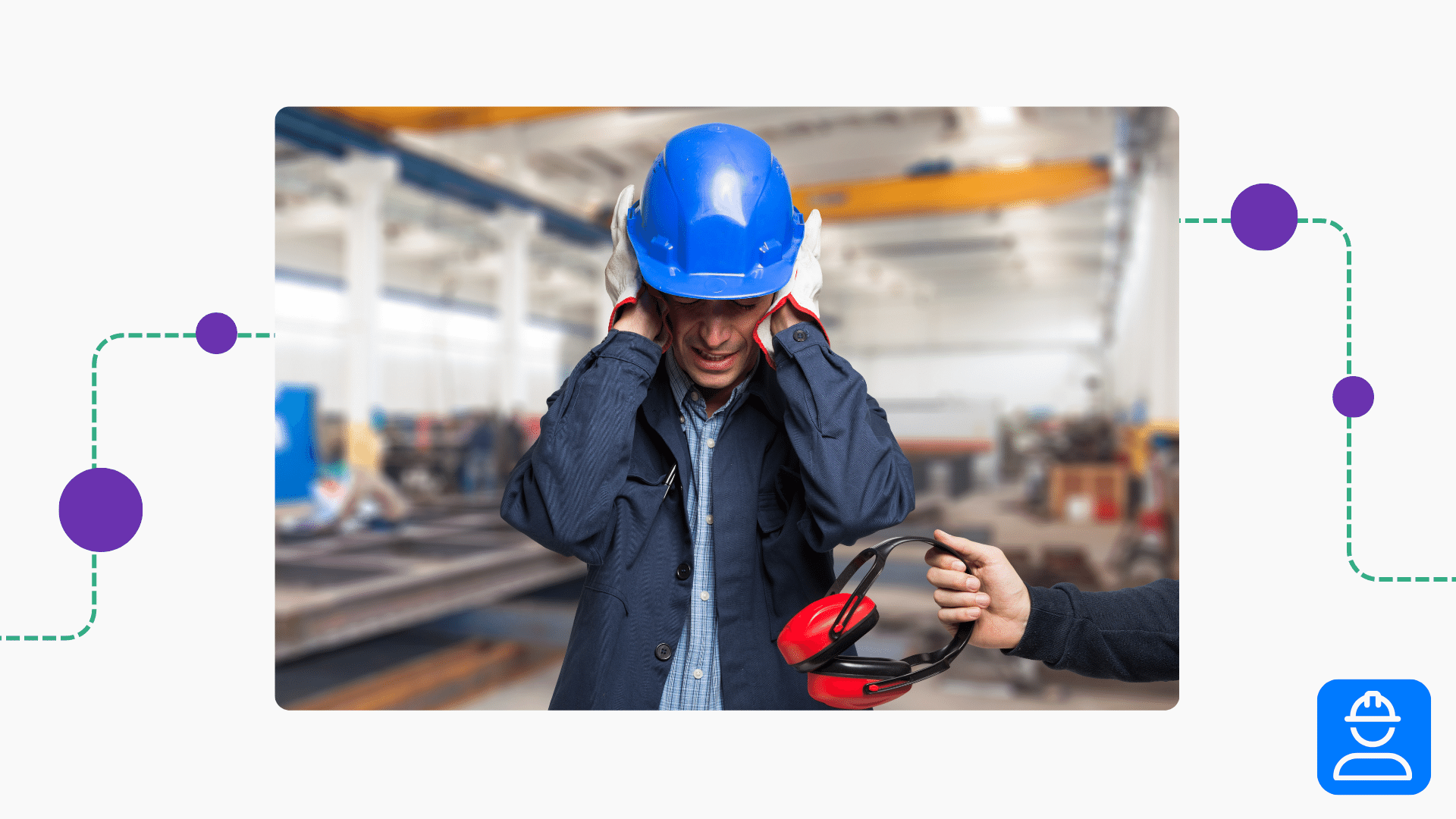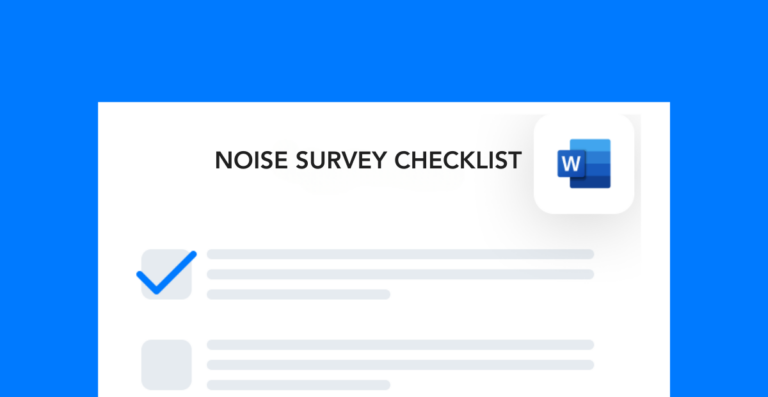In the realm of PPE, many workers don’t consider hearing protection to be essential. And while you might not require workers to use it, hearing protection should still be an option that they feel comfortable to use. Conduct this hearing protection toolbox talk to convey the benefits of wearing well-fitted protective devices.
Free template!
Download this free noise survey checklist to assess your noise exposure control measures.
Hearing protection toolbox talk overview
During this hearing protection toolbox talk, we’ll answer two questions:
- What happens when you don’t protect your ears?
- What are the safety measures you should take?
Like all forms of personal protective equipment, protective hearing devices lower noise exposure risks. But you might be surprised to learn that it can also improve productivity and help you manage your stress levels.
Consequences of poor hearing protection
Hearing is one of the most overlooked areas of physical safety. And that’s because wearing the right protective devices often comes at the expense of workplace socialization. After all, it’s hard to talk to a coworker when you can’t hear them.
But it’s important to understand that there are consequences for not wearing proper hearing protection. Here are some reasons why you should take this area of safety more seriously:
1. Prolonged exposure to high noise levels can cause permanent hearing damage and loss. This issue builds slowly over time, so you might not realize the impact of the effects until it’s too late. It can make everyday conversation difficult and have a trickle-down effect on other areas of your life.
2. Lack of hearing protection can also make it more difficult to focus on your tasks. By blocking out loud noises, you can concentrate on your work without getting distracted by the noise around you.
3. Listening to loud noises all day can also lead to increased stress levels, which may affect overall job satisfaction and performance.
The best thing about wearing hearing protection is that it solves all these issues at once. The key is to find the right equipment for every situation.
Hearing protection safety measures
Not all protective hearing devices work for all situations. So, it’s important to know the requirements of your work area. The three most common hearing devices are:
- Earmuffs
- Earplugs
- Canal caps
Whichever one you use, you need to ensure that it fits snugly for optimum noise reduction. Some devices may involve a molding process to achieve a custom fit.
The number one tip for using hearing protection is to USE IT CONSISTENTLY. If you only wear your hearing protection part-time, then you’re still at risk of hearing loss. To get the most benefit, wear your protective device every day and make it part of your routine. If you treat all your PPE as essential, then you’ll greatly lower your risk of injury.
Hearing loss is a very real possibility, especially if you work in an industrial setting. The best thing you can do to prevent it is to wear hearing protection throughout your shift. This simple, yet effective, control measure all comes to down building and maintaining safe workplace habits.




